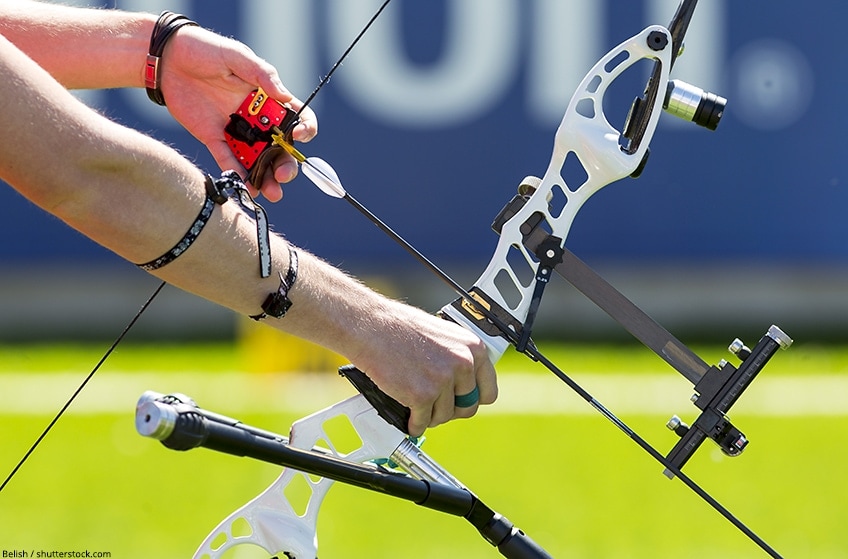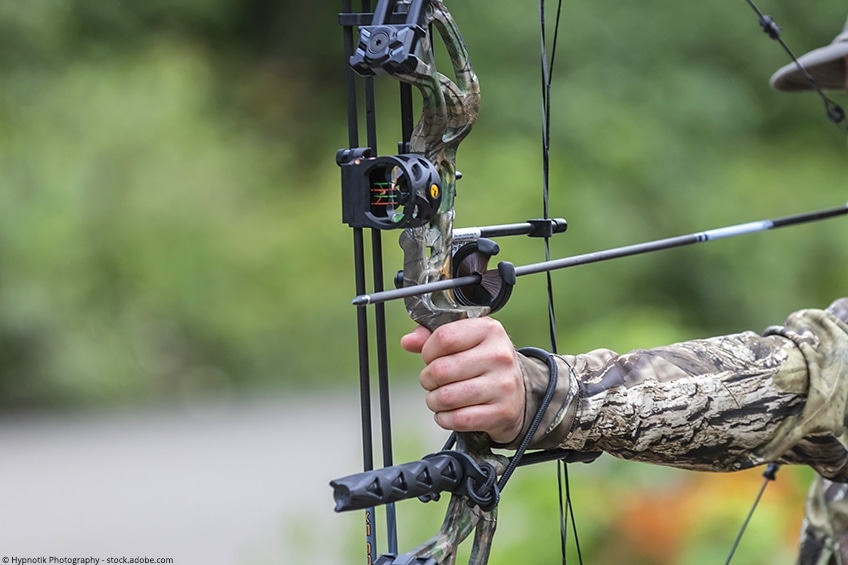Learning archery an exciting adventure. Once you get into the sport, it is important to buy the right equipment. Your skills will improve faster if you use your own equipment. A bow tailored to your draw length and arrows of the right length will greatly improve your accuracy and optimize your learning curve. If you are looking for the best compound bow for the money, and your equipment fits you well, you will feel more comfortable when shooting. We will help you to find your ideal archery bow and accessories with our guide to the best beginner compound bow.
They have a slim and effective design and are mainly used for target shooting – although they can also be used for hunting. These two types of archery bows are the best bow for beginners.

There are also other Types of Bows:
Then there are other variations of the above mentioned bows, like the blank bow or the Yumi Bow. These are presented in more detail elsewhere in our guide.
Recurve Bow – Ideal for Beginners
The Recurve Bow is the only bow used for Olympic shooting, therefore it is often called Olympic bow.
The Recurve Bow is one of the best bows because the curved limbs store and release more energy. These recurve arms are often made of a combination of carbon, fiberglass, and wood. The middle piece is made of aluminum, which has been milled into the appropriate shape.
The bow can be disassembled into three parts, which makes transport of the archery set much easier – so parts can also be replaced or exchanged.
With the Recurve Bow one often uses a visor and stabilizers as accessories.
Compound Bow – Much Power with little Traction
The compound bow is used not only for hunting but also for target shooting. It was only invented in the sixties and is based on the pulley principle. There are rollers, also called cams, at each end of the bow. When the bow is now tensioned, the tendon or a steel cable winds itself around these rollers and thus stores a lot of energy.
This has the consequence that during tensioning there is a resistance like e.g. with a recurve bow, when exceeding the peak tension weight the tension immediately decreases to a fraction. This reduction of tension can be up to 80%.
The pros are obvious: much less effort is required, the bow can be held more still and aiming becomes easier.
As for accessories and extensions, there are various possibilities: From the sight, a special scope with a magnifying glass, and much more.

Longbow – The Original Bow Form
The longbow is a traditional bow, which is rod-shaped in the relaxed state. When cocked it is available in D-form (Selfbow), but also with flattened throwing arms, which is the more modern version of the longbow.
The name longbow comes from the length of the bow – it is often as large as that of the archer. Today, however, the bow length is much less long and therefore the draw weight is also easier to handle.
For beginners, the longbow is not necessarily recommended, because the handling is a bit more difficult, for the first attempts a recurve bow is much more suitable.
Although a traditional bow, it is now also available in carbon/fiberglass.
Mongolian Horse Bow- The Handy and Agile one
The Mongolian Horse Bow a relatively small bow that was originally used to hit targets from horseback. Here of course the handiness and agility were important.
But a Mongolian Horse Bow does not only have its advantage from the horse, but it can also be used very well in smaller rooms.
The Mongolian Horse Bow is not recommended for absolute beginners, because the aiming is much more demanding due to the small throwing arms.

Which Bow is especially suitable for Beginners in Archery?
Basically you can start into the world of archery with any bow. However, depending on the type of bow you choose, the learning curve is steeper or flatter.
So if you want to see the first successes quickly and have a low frustration tolerance, we clearly recommend the recurve bow or compound bow. The reasons for this:
These are just a few of the advantages of the above-mentioned bows.
A recommendation for recurve bows and compound bows follows.
Train length
- Take your height in inches and divide it by a factor of 2.5, for example: If you are 1.80 meters tall, this corresponds to 70.8 inches and (180cm / 2.54 / 2.5 = 28.3). So the correct draw length here would be an arc with a draw length of 28 inches. This formula usually works very well.
- You can also go to a specialist shop and have the train length measured with a special device.

Bow Draw Weight
Right- or left-handed Bow
Everything to the topic arrow you find with us in the following article: Buy Arrows Guide











































